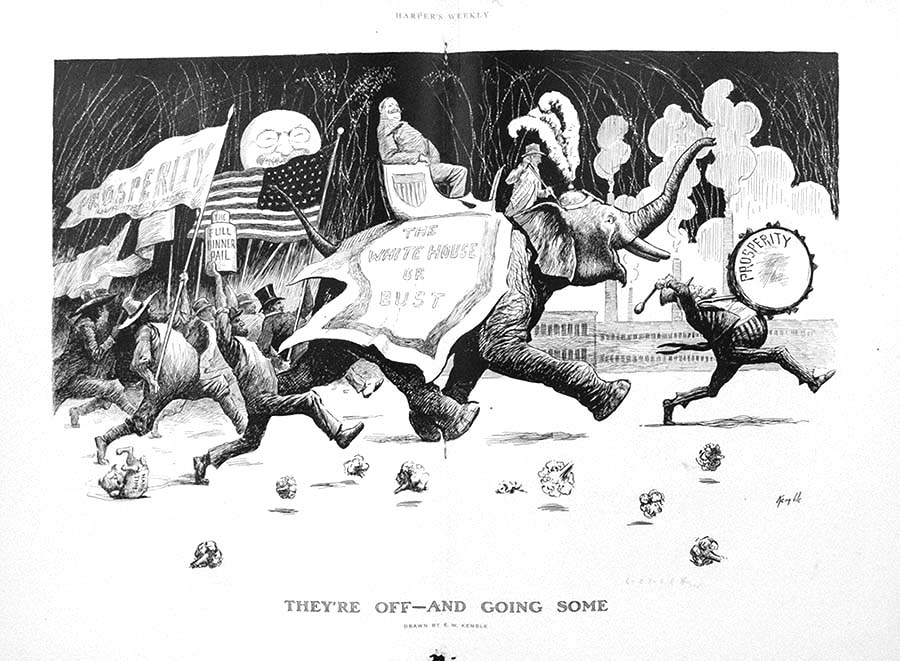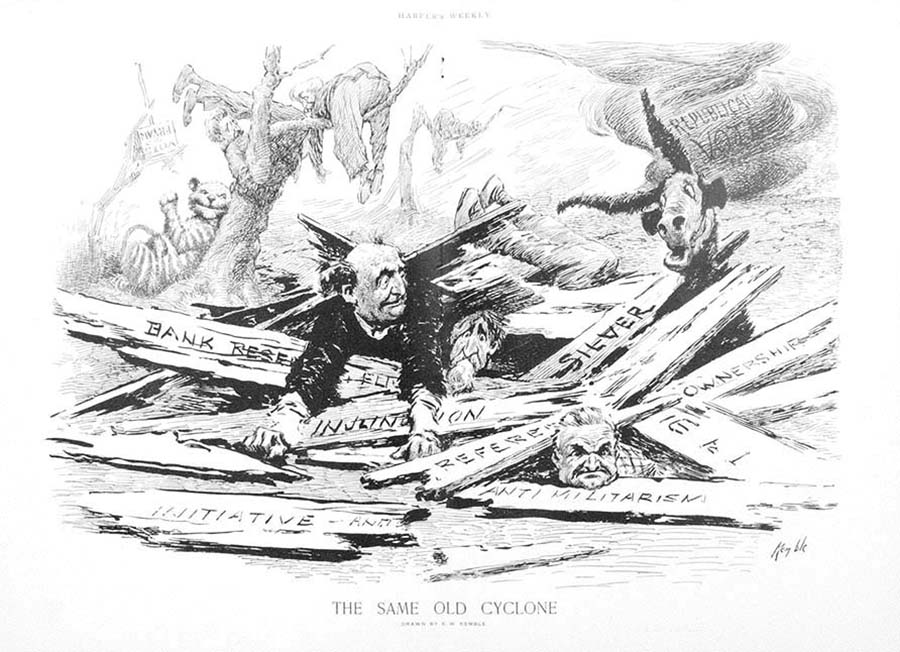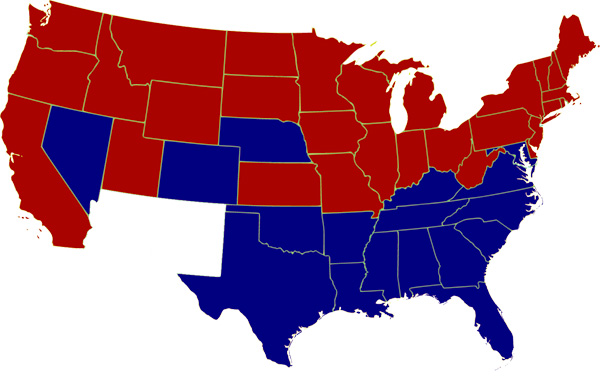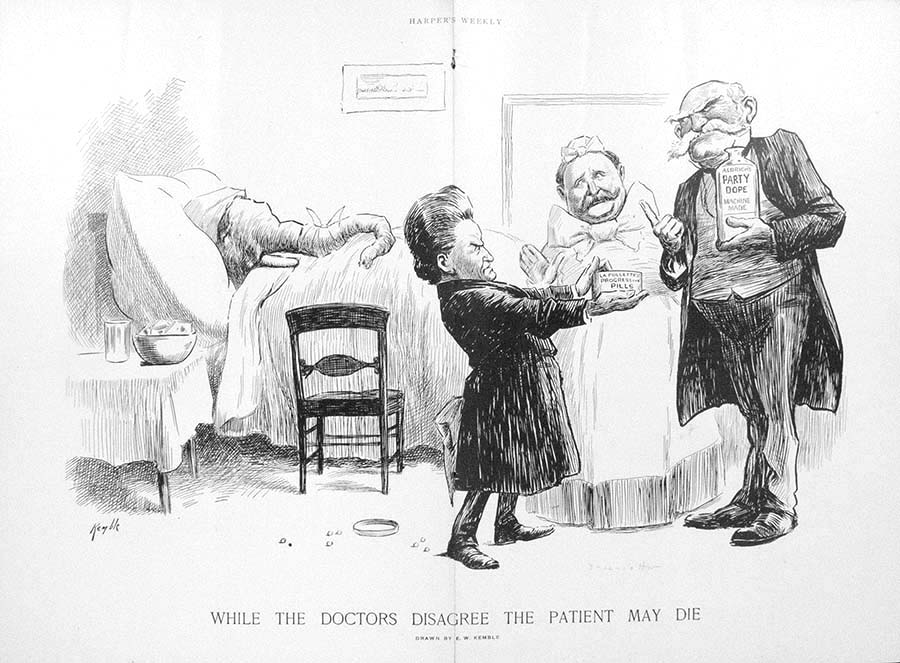
Political Cartoons of 1908 and 1912
With the 2016 presidential election so rapidly approaching, it seems only fitting to look back at past elections for insight and perspective. The political cartoons of the 1908 and 1912 presidential campaigns are particularly illuminating, as they so clearly depict the same shifting balances of power, the intra-party divisiveness, and the debates over economic policy that we see today. Edward Windsor Kemble (1861-1933) was one of the illustrators of the time, and three of his pieces are depicted below.
1908 Presidential Campaign

The election of 1908 was a decisive victory for the Republican Party. Fulfilling a promise not to seek another term, incumbent Theodore Roosevelt endorsed William Taft, his Secretary of War, as the Republican successor. This cartoon shows Taft’s campaign as a parade, Taft sitting atop the Republican elephant in the lead, marching forward to the beat of prosperity. Roosevelt’s smiling face appears above, watching over the campaign. Given Roosevelt’s influence and support, some commentators of the day claimed that the name “Taft” was really an abbreviation for “Take Advice From Theodore.”

The Democratic contender in 1908 was William Jennings Bryan. This was Bryan’s third and final unsuccessful bid for office- the previous two were 1896 and 1900. The cartoon shows Bryan in the water along with the Democratic donkey, grabbing on to his many, scattered campaign “planks.” The destructive “Republican Vote” cyclone appears in the background. Bryan is the individual to the left, with both hands out of the water.
The Republicans won the election:

1912 Presidential Campaign

In 1912 the Republican Party was no longer united. Roosevelt believed that Taft was too conservative, insufficiently progressive. Unsatisfied with Taft’s politics, but unable to win the Republican nomination, Roosevelt ran for president in the newly formed Progressive or “Bull Moose” Party. The Democrats selected Woodrow Wilson for their candidate on the platform of “New Freedom.” Many of the major issues of the day, referenced in the three main parties’ platforms, were economic: tariff policy, trust regulation, cost of living, and currency policy.
The political cartoon above dates to 1910, and while it precedes the 1912 election, it nevertheless foreshadows that election’s issues and consequences. The doctors symbolize the conflict between the conservative (here, represented by Nelson Aldrich to the right) and progressive (here, Robert La Follette, to the left) wings of the Republican Party.
In 1912, the divisiveness manifested itself in the formal split off of Roosevelt’s Progressive Party.
Taft and Roosevelt divided the vote, and Wilson won the election:

Credits
All political cartoon images shown are from the Walt Reed Illustration Archive. To visit the Dowd Modern Graphic History Library, contact us to make an appointment.
An overview of the 1908 and 1912 campaigns can be found on the Miller Center’s website.
Election platforms for 1908 and 1912 are available on the American Presidency Project’s website: Republican Party (1908), Democratic Party (1908), Progressive Party (1912), Republican Party (1912), Democratic Party (1912).
